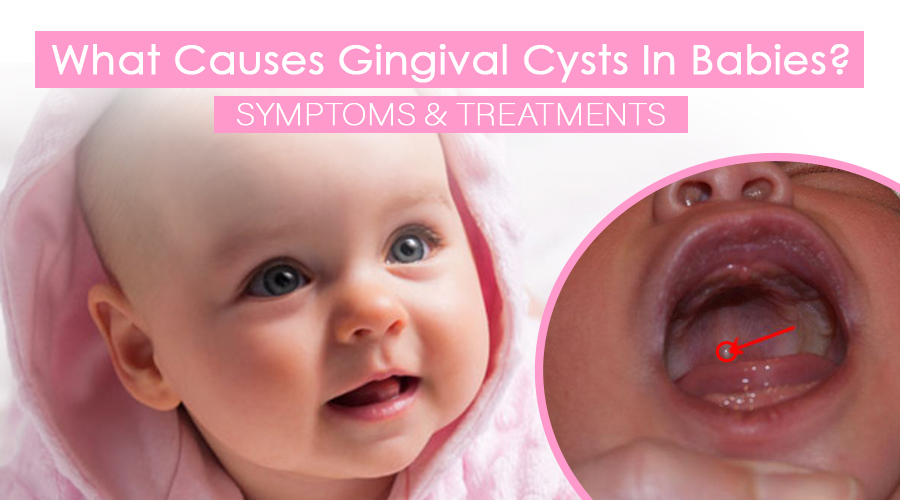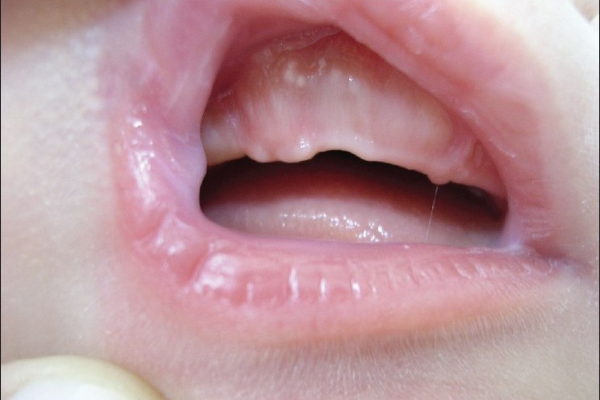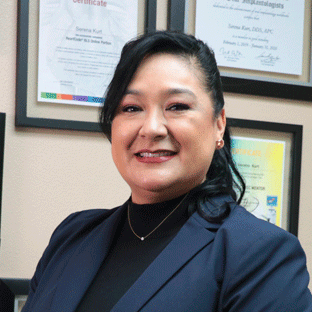Does your baby have a tiny white bump on their mouth? A gingival cyst (also called Epstein pearl) is a little white or yellow-tinted lump that can appear on your child’s gum line or the roof of their mouth.
They usually affect infants and children and are relatively common, with 60 to 85 percent of babies having them. They’re also more prevalent in infants who have older mothers, were born after their due dates, and have a higher weight at birth.
At first sight, this type of gingival cyst may appear strange, but they are entirely harmless. Continue reading to find out more about Epstein pearls, including symptoms, treatment, and whether or not you can get them as an adult.
What Are the Signs of Having a Gingival Cyst?
You’ll probably see them along your baby’s gums or on the roof of his or her mouth. But aside from how they look, Epstein pearls do not cause any symptoms.
These cysts are whitish-yellow nodules that range in size from 1 to 3 millimeters. If the cysts appear on the mandibular anterior ridge of a newborn, sometimes they can mistake it as natal teeth on rare occasions.
In neonates, they usually present as numerous nodules along the lower part of the mouth, behind the lower teeth, or the roof of the mouth between the upper teeth and the hard palate.
Can You Get Gingival Cysts As an Adult?
You can only find these Epstein pearls in newborns. But with adults, on the other hand, there’s a chance they can develop a tooth cyst that appears like an Epstein pearl.
It’s usual for adults to develop cysts near the roots of dead or hidden teeth. Unless they get infected, they usually do not produce any symptoms. However, you could experience discomfort and swell around the cyst if this happens.
Dental cysts can expand in size over time. They may put pressure on your teeth if they develop large enough, resulting in jaw weakness.
The way to treat adult gingival cysts is with a simple procedure named “excisional biopsy” and, once gone, have a low risk of recurrence. The dentist will also remove any dead root tissue, lowering the risk of the cyst recurring.
What Are the Causes of Gingival Cysts?
One of the leading causes of cysts is due to the baby’s skin getting stuck when they are developing. As the skin continues its process, the trapped skin will fill with keratin, forming an Epstein pearl.
Since the lumps start forming in the womb, you can’t really avoid them. It’s also not a symptom of anything you did or didn’t do during pregnancy, so have that in mind if your child is born with a gingival cyst.
Do You Need to Visit the Doctor When Spotting a Cyst?
This type of gingival cyst is entirely safe. However, if your child starts to show signs of pain or agitation, you should definitely schedule an appointment with the doctor.
And, since Epstein pearls are so frequent, the doctor will most likely be able to recognize these bumps just by looking at them.
The doctor will examine your baby’s mouth to look for evidence of any natal teeth growing, depending on their symptoms. These are teeth that show at birth in some newborns. They’re uncommon, yet they can resemble a lot like Epstein pearls.
Remember that usually, you don’t need to treat this type of cyst in any way. They tend to simply disappear on their own within a week or two of being born. Besides, breastfeeding, bottle feeding, or using a pacifier causes friction in your baby’s mouth, which helps break down and dissolve the bump quickly.
What If They’re Not Epstein Pearls?
It can be challenging to tell the difference between the following symptoms and Epstein pearls. To be safe, get anything strange in the baby’s mouth checked out by a pediatrician:
Natal teeth
If Epstein pearls form on the gums, they may be mistaken for natal teeth. While infants can have teeth, this is exceptionally unusual, occurring in only 1 in every 800 to 6,000 births.
Parents or caregivers should consult a pediatrician when their child is born with one or more teeth. Loose teeth or those that obstruct feeding are common. In these situations, a doctor may advise removing them.
Oral thrush
White spots in a baby’s mouth can sometimes be a sign of thrush, a fungal illness. Candida yeast gets inside a baby’s mouth and affects the tissues there, causing oral thrush.
White spots or bumps in the mouth, notably on the inside of the cheeks and the tongue, are signs of oral thrush. It can cause some discomfort or difficulties feeding, but it is rarely life-threatening.
You can use antifungal medicine to treat oral thrush. It’s critical to get medical attention since the infection can spread to a woman’s breast if she’s breastfeeding, causing cracked nipples and sore breasts.
Hand-foot-and-mouth disease
Hand, foot, and mouth disease affect children under the age of five and is due to a virus. Within a few days, the problem normally goes away on its own.
Sores in the mouth that blister is among the symptoms. They may begin as tiny red spots in the mouth’s rear. The sores might be uncomfortable, causing fussiness or feeding difficulties.
If a youngster exhibits any symptoms of this condition, he or she should contact a pediatrician. If the baby can’t consume enough fluids, it might lead to dehydration in some situations.
Other issues
You should consult a professional if your baby is extremely fussy, has difficulty feeding, or appears ill. Even while gingival cysts are unlikely to cause any of these issues, it’s always a good idea to rule out another potential health issue.
Epstein pearls may appear frightening to new parents, but there’s not much to worry about. Just give it a few weeks to disappear.
On the other hand, if your kid is in pain, there’s probably something else going on. In that scenario, you should seek medical guidance.
If you think you might be dealing with a cyst in your mouth, try contacting our Clairemont dentist, Dr. Serena Kurt. She’s a highly skilled and experienced dentist who will give you the best care in San Diego.






